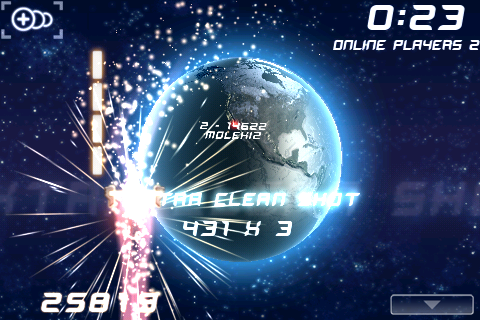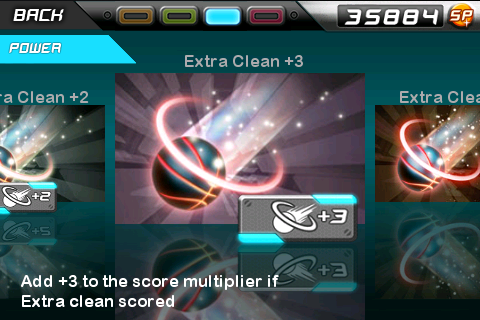Stardunk on Android – Commercial suicide?
// August 22nd, 2011 // Stardunk

Coming from the iOS world, the Android Market was a big unknown between the device fragmentation, the poor visibility and the lower monetization. We decided to do the jump and release both our games, Stardunk and iBlast Moki to Android. We released Stardunk 2 months ago, Stardunk reached the top #20 Free, has passed one million downloads and has a perfect rating of 5 Stars with around 28000 ratings. It was also featured by Google and here is what we learned.
The power of polished apps

Quality definitely pays on Android and players are more willing to give 5 stars than on iOS. We were amazed to see a perfect rating of 5 stars for Stardunk, which was not an easy task between the featuring from Google which was bringing thousands of players who might not be interested in the game and the device fragmentation causing some issues on a lot of different devices.
One of the key thing is to listen to your customers and fix those issues, at the beginning you might be spending a lot of time replying to emails and fixing bugs, but this pays and makes your customers happy and translates to a better rating and great reviews. One thing we did quite early was also to remove the device from the list of supported device, when we knew for sure that Stardunk was crashing on those. And as soon as we had the bugs fixed, we were adding them back to the list. This avoids quite a few one star!
The ranking algorithm
We launched Stardunk first on the android market where it started slowly to raise in the charts with around 10k to 12k downloads per day to reach the top #50 after a few days. From what we learned Google’s ranking algorithm is really not behaving the same way as Apple’s ranking. With Apple’s algorithm if your number of downloads increases, it takes generally a few hours to see your app moving in the charts. On the Android Market, it’s a slow process which takes several days, even a week to see the impact of the number of downloads on the ranking. Google seems to have included other factors such as the number of active installs (player still having the game on their phone), ratings and probably other factors.
After 4 weeks at a ranking of ~#50 in the free apps, Google featured Stardunk, which is the best thing that could have happened. The # of downloads was multiplied by 3 to reach around 50k downloads / day and once Google decided to feature your app, they leave it 2-5 weeks in the featured section, which is like winning the jackpot. Stardunk rose to #16 in the free charts.
Since its highest, Stardunk is slowly falling in the charts and is currently #90. One thing I am still not sure to understand, is even after getting more downloads than before the featuring, the ranking is getting lower and lower. Stardunk was at a steady position of #50 for days with around 12k downloads/day and today even though Stardunk is downloaded more than 18k times a day, the ranking is falling down. Which would mean that they might include a trend or a recent app criteria in their algorithm.
The different distribution channels
The Android Market is the biggest channel and the one you need to focus on. We received tons of emails from unknown channels and had Stardunk published only on Amazon and Getjar. Amazon is driving around 10-30 downloads per day which really doesn’t worth the hassle of changing your app to match their requirements and going through their slow review process. So my advice would be to only focus on the Android Market and have publishers for China and Korea where your game can’t be distributed through the Android Market.

The fun of developing for Android
Releasing a game on the Android Market is super easy, it’s one click and 15 min later the game is visible on the google market. This is just amazing, you can iterate really quickly, we had an issue reported by some users and a few hours later we were releasing an update with the fix in it. This allows a really fast iteration that we don’t have on iOS.
The other great thing is you can send you apk (binary) to anybody and they can install it just by clicking on the link from their phone, you don’t have to worry about the provision profile or anything else. This allowed us to test a build easily with players reporting issues and testing that it was fixed.
Other advice, that bit us really hard at the beginning, do backup of the player data on your own servers. There’s no backup of the user data to a PC or a Mac such as iTunes does it for iOS, so players are getting crashes which could just wipe all their data or they might also reset or change of device. To avoid having really unhappy customers, I strongly suggest you implement as early as possible a feature where you save the data of the players on the cloud and you allow the users to download it anytime they want.
Conclusion, is it a commercial suicide or not?
For Stardunk which is a free app and thus monetize the usage and not the download, the average revenue per daily user is 3x lower compared to the iOS version. But this is compensated by being downloaded by more users on Android. As of today both versions have about the same revenue, and we covered our initial development cost really quickly.
Maybe we were lucky with Stardunk, a free app which corresponds to the criteria of what people like on the android market, a free and quality app.
We are going to release iBlast Moki on Android next month, iBlast Moki will be a paid app, so it will be interesting to compare those 2 markets. That might be the subject of another post. If you want to check out Stardunk here is the link







Want to ask a stupid question…
Changing from IOS to android
All the code need to be rewrite or simple convert by some program?
iOs is Objective-C, Android is Java. Need to be all rewrite
We are mostly using C++ so only a small part need to be converted from Objective C to Java
[…] well, Stardunk developer Godzilab has reported seeing some financial success on the Android Market, as discussed in a recent blog post. While the average revenue per user on Android has been one-third that of the revenue on the iOS […]
How did you handle the C++ code then?
Run it native via the NDK?
How do you monetize the usage on the Android platform?